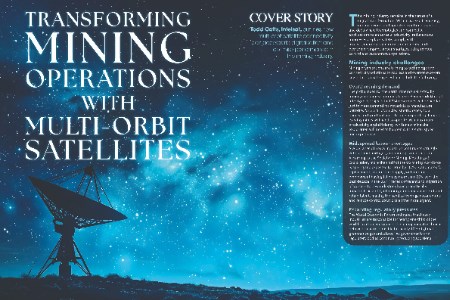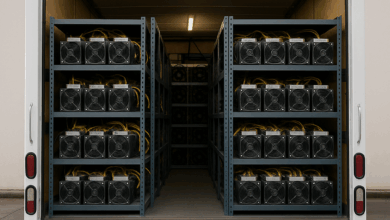Transforming mining operations using multi-orbit satellites

Intelsat’s Todd Coates explains how multi-orbit satellite connectivity can accelerate digital transformation and improve performance in the mining industry.
The mining industry is still in the midst of digital transformation. With increasing frequency, mining owners and operators continue to adopt and deploy new technologies and connected applications to enhance productivity, reduce costs, improve workplace safety, comply with ever-emerging regulatory requirements, and overcome rampant labor shortages using remote control and autonomous operations.
Mining industry challenges
Mining organizations are turning to technology and connectivity solutions to address and overcome several key industry challenges, which include:
Overwhelming demand
The global need for earth minerals extracted by mining companies continues to rise. Benchmark Mineral Intelligence predicts that just 384 new mines will be needed to meet demand for materials needed to make electric car batteries, smartphones, solar panels and wind turbines. To meet increasing demand, existing mines will need to operate with maximum productivity and efficiency, while new mine sites must be explored more quickly and expeditiously.
Widespread labor shortages
A wide range of heavy industries continue to suffer from labor shortages, and mining is no exception. According to the Mining, Minerals and Exploration Association, more than half of the U.S. mining workforce is aging and expected to retire by 2029.1 There is a shortage of replacement candidates, with mining employment declining by more than 20% over the past decade in the United States.2 Talent shortages and the migration of workers to new industries have significantly impacted mining companies’ ability to recruit and retain talent, making the need to leverage autonomous and remote control solutions even more urgent.
Expanding regulatory pressures
The World Economic Forum estimates that heavy industry is responsible for nearly a third of the world’s carbon emissions.3 The mining industry alone is thought to be responsible for approximately 10% of global greenhouse gas emissions.4 As governments and regulatory bodies continue to introduce additional requirements to reduce environmentally harmful practices across all industries, mining owners and operators face challenges to achieve compliance and avoid costly financial penalties.
Widespread safety concerns
Worker safety is always a prevalent and dominant issue in inherently hazardous work. According to UN reports, heavy industries such as mining, construction and transportation account for a high percentage of occupational deaths of 2.78 million deaths each year. The U.S. Bureau of Labor Statistics reports that mining ranks first in rates of fatal work-related injuries. Despite advances in technology, workplace practices and training, mining deaths will still see a 31% increase in 2023.5
This is a preview of an article originally published in the October 2024 issue of Global Mining Review.
Subscribe to Global Mining Review for free to read this article in full and many more here.
Read the article online at: https://www.globalminingreview.com/mining/30122024/transforming-mining-operations-with-multi-orbit-satellites/
Global Mining Review is not responsible for the content of external websites.
https://d19qcjcztr69p4.cloudfront.net/media/articles/pop/290795.jpg




